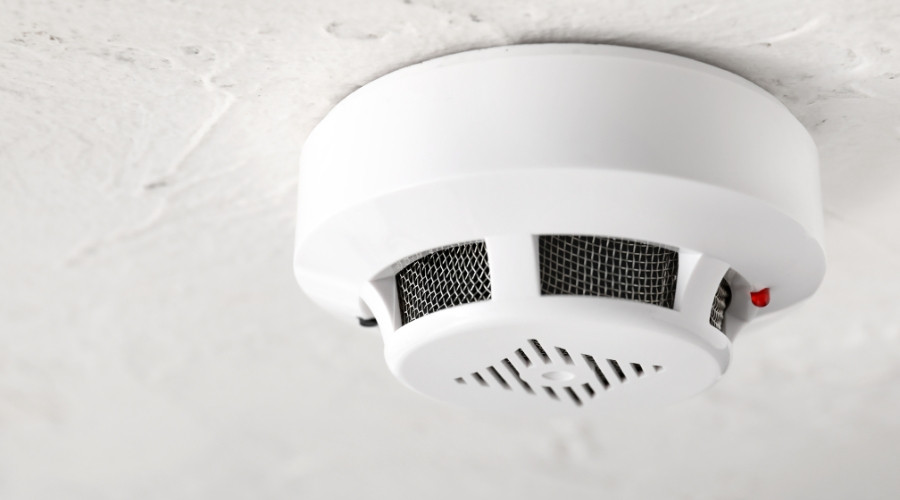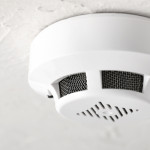Important Basics to Know About Installing Smoke Detectors
Reliable smoke detector installation forms a critical layer of home safety. Clear planning around placement and device type helps smoke detectors and smoke alarms provide the fastest possible warning. The notes below outline practical guidance for positioning devices, the value of professional support, and how to recognize when smoke detector replacement or smoke alarm replacement is due.
Importance of Smoke Alarm Placement
Thoughtful placement ensures a smoke detector senses smoke quickly and sends an audible alert where it matters most. Sleeping areas need special attention; installing a smoke alarm in every bedroom and in the hallway just outside sleeping zones improves the chance of early notification at night. Common gathering spaces—living rooms, family rooms, and dens—also benefit from coverage, since activities and appliances in these areas can introduce potential ignition sources.
Complete protection includes every level of the residence. Place smoke alarms on each floor, including basements and finished attics, to create vertical layers of detection. Stairways, long corridors, and lofted areas often act as natural pathways for smoke and can serve as strategic locations. To enhance audibility, interconnected smoke detectors—hardwired or wireless—can cause all units to sound together, improving response time throughout the home.
Placement should avoid locations that cause nuisance trips while still providing timely alerts. Near kitchens or bathrooms, consider distance and airflow to reduce false alarms from cooking smoke or steam. Following manufacturer instructions and local guidelines helps ensure dependable performance across the entire home footprint.
Benefits of Professional Smoke Detector Installation
 Professional smoke detector installation brings code knowledge, correct wiring practices, and precise placement. Licensed installers evaluate ceiling height, ventilation, and airflow patterns to position each smoke detector for effective coverage while limiting false alarms. They also integrate devices with existing systems and confirm that backup power is configured correctly.
Professional smoke detector installation brings code knowledge, correct wiring practices, and precise placement. Licensed installers evaluate ceiling height, ventilation, and airflow patterns to position each smoke detector for effective coverage while limiting false alarms. They also integrate devices with existing systems and confirm that backup power is configured correctly.
Modern options include photoelectric, ionization, and dual-sensor technologies, as well as models that combine smoke and carbon monoxide detection. Professionals can recommend an appropriate mix based on room function and layout, then complete smoke alarm installation to manufacturer specifications. Interconnected networks and smart-capable detectors may also be advised for broader notification and remote awareness.
As part of a professional visit, technicians test every unit, verify interconnection, and document installation details for future maintenance. Guidance on routine testing and cleaning helps keep alarms responsive, while clear notes about device age support timely smoke detector replacement before performance declines.
Signs Smoke Detector Replacement Is Needed
 Over time, sensing components inside smoke alarms and smoke detectors gradually lose sensitivity. Many manufacturers recommend replacement around the decade mark, though device-specific guidance should be followed. Checking the manufacturing date on each unit provides a straightforward way to plan smoke alarm replacement on schedule.
Over time, sensing components inside smoke alarms and smoke detectors gradually lose sensitivity. Many manufacturers recommend replacement around the decade mark, though device-specific guidance should be followed. Checking the manufacturing date on each unit provides a straightforward way to plan smoke alarm replacement on schedule.
Beyond age, several indicators point to immediate action:
- Inconsistent test results or a noticeably weak sound during testing.
- Frequent nuisance alarms without an identifiable cause.
- Persistent chirping that continues after installing fresh batteries.
- Visible damage, discoloration, or paint overspray that may obstruct sensors.
Home renovations or changes in layout can also trigger a need for new devices or additional placements. When updating older equipment, consider replacing all units at once with a coordinated system to standardize features and simplify maintenance. If certain areas have been underserved—such as basements, bonus rooms, or converted spaces—adding devices through targeted smoke alarm installation helps close coverage gaps.
Routine care also supports long-term performance. Monthly testing, gentle vacuuming of sensor openings to remove dust, and battery changes as needed help maintain responsiveness. Scheduling periodic professional evaluations ensures devices remain correctly positioned and interconnected as living spaces evolve.
Strong fire safety depends on layered protection: well-placed devices, reliable power, routine testing, and timely smoke detector replacement. With these elements in place, smoke alarms can deliver fast, clear warnings when seconds matter most.
About Hunter Service Group
Hunter Service Group is a locally owned and operated electrical and HVAC company providing expert service in San Antonio, TX. They offer flat-rate, upfront pricing and on-time arrivals from honest, hard-working technicians. Call them today to schedule smoke detector installation in San Antonio, TX.







